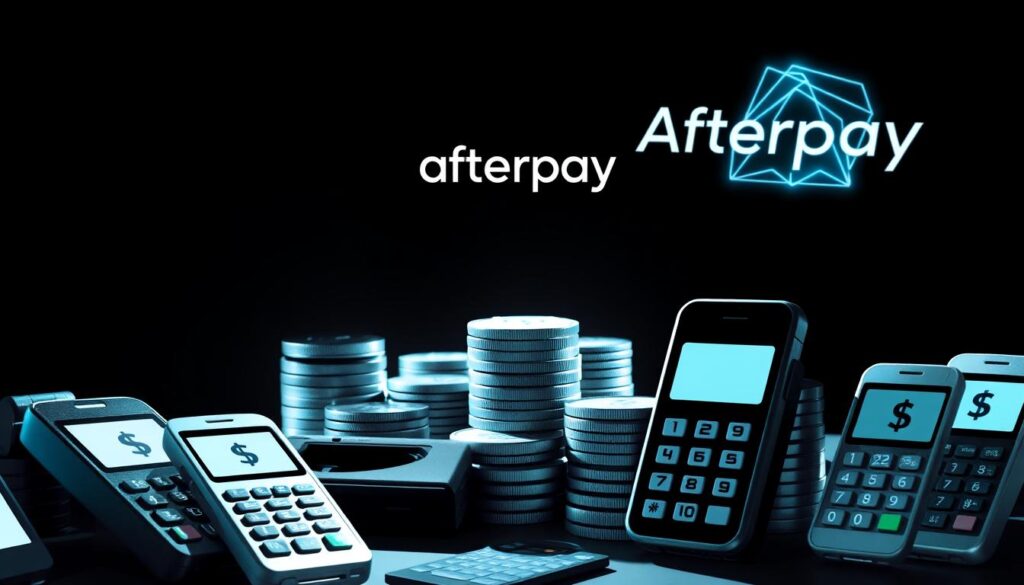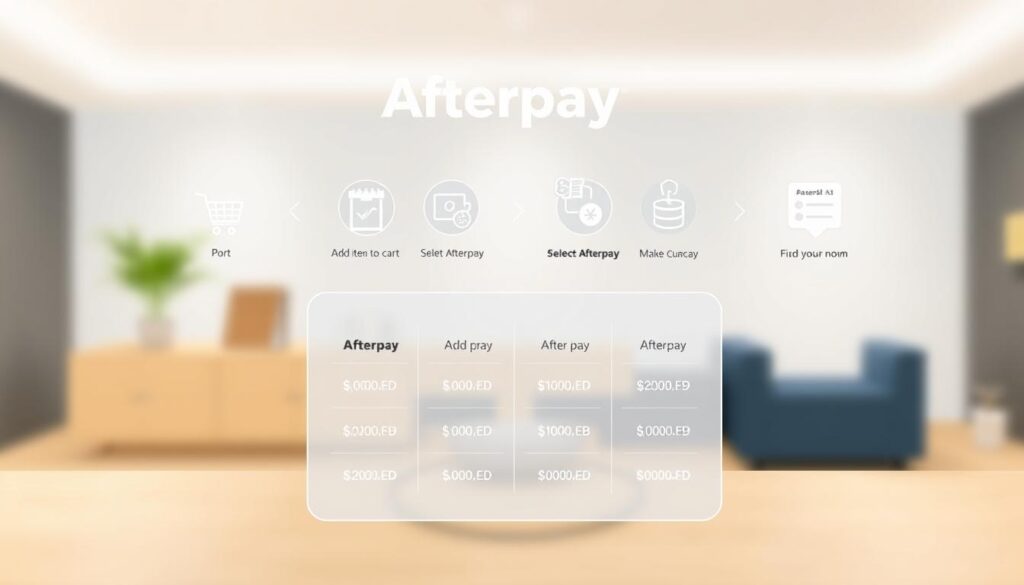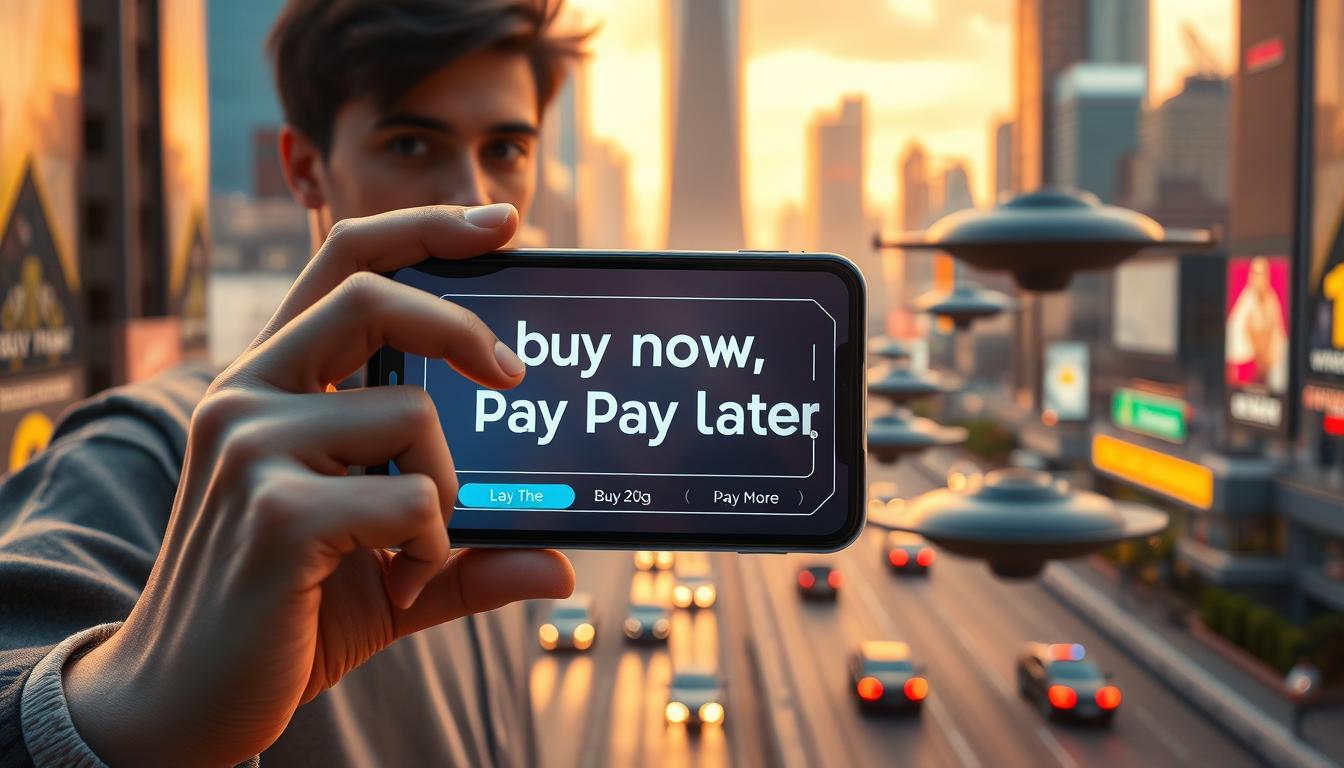The digital payment world is changing fast. Services like Afterpay are leading this change. They let people buy things and pay for them later, without any interest.
Starting in Australia, Afterpay has become big in the US too. It’s a hit with people who want flexible payment options.
Afterpay makes shopping online and in stores easier. Its simple interface and interest-free payment plans are changing how we shop. Knowing the good and bad about Afterpay is key for both shoppers and sellers.
Key Takeaways
- Afterpay is a digital payment service that allows consumers to buy now and pay later.
- It’s popular in Australia and gaining traction in the US.
- Afterpay offers interest-free payment plans, making it an attractive option for consumers.
- The service is user-friendly and available for both online and in-store purchases.
- Understanding Afterpay’s pros and cons is essential for consumers and merchants alike.
What Is Afterpay?
In recent years, Buy Now, Pay Later (BNPL) services have changed how we shop. Afterpay is at the top of this change. It lets you buy things now and pay later in bits, not all at once.
The Buy Now, Pay Later Revolution
The BNPL movement is growing fast, with Afterpay leading the way. It lets you break down payments into smaller bits. This makes online shopping easier, without the need for a big upfront payment. It’s a hit with the younger crowd who prefer digital payments.
Afterpay’s Business Model
Afterpay splits your purchase into smaller parts, usually every two weeks. They offer “pay in 4” and monthly plans for some items. Merchants pay a fee for using Afterpay, but it helps both sides. It makes shopping easier for you and boosts sales for stores.
The History and Evolution of Afterpay
Afterpay started in Australia and has become a big name in financial technology worldwide. Its story shows the creativity of the fintech world.
From Australian Startup to Global Fintech
Afterpay began in 2015 in Australia. It quickly became popular as a buy now, pay later service. Its success in Australia led to growth in the United States, the United Kingdom, and Canada.
Its global success came from:
- Strategic partnerships with major retailers
- Innovative payment solutions for today’s digital age
- A simple payment process for users
The Block Acquisition and Rebranding
In 2021, Afterpay was bought by Block (formerly Square). This was a big step in its growth. Afterpay kept its brand but got more resources from Block to grow worldwide.
How Afterpay Works for Shoppers
It’s important for shoppers to know how Afterpay works. This payment method lets you buy now and pay later in installments. It’s great for managing your finances.
The Four-Payment Structure
Afterpay’s payment plan is simple. Your total purchase is split into four equal payments, every two weeks. The first payment is due at checkout. The next three payments are taken automatically from your linked payment method over six weeks.
| Payment Number | Due Date |
|---|---|
| 1st Payment | At Purchase |
| 2nd Payment | 2 weeks after purchase |
| 3rd Payment | 4 weeks after purchase |
| 4th Payment | 6 weeks after purchase |
Setting Up an Afterpay Account
To start using Afterpay, you need to create an account. Just give your name, email, phone number, and birthdate. You also have to link a debit or credit card. Setting up is fast and can be done online or through the app.
Making Your First Purchase
After setting up your account, you can make your first purchase. Choose Afterpay as your payment method. For online buys, log in to your Afterpay account and confirm. For in-store buys, use the app and follow the instructions.
Understanding Afterpay’s four-payment plan, setting up an account, and making your first purchase helps you manage your finances. It lets you enjoy your purchases without worrying about immediate payment.
How Merchants Implement Afterpay
Adding Afterpay to your business can really help. It gives customers a flexible way to pay. This service is getting more popular, and it’s easy to add to your checkout.
Integration Options for Businesses
Afterpay has many ways for merchants to join in. You can add it to your online or in-store payments. Here are some ways:
- API integration for online stores
- Point of Sale (POS) integration for in-store purchases
- Plugins for popular e-commerce platforms like Shopify and Magento
This makes it easy for merchants to offer Afterpay everywhere.
Merchant Fees and Payment Processing
Merchants pay a fee for each Afterpay transaction. The cost is usually 4-6% of the sale. Here’s what you need to know:
- Merchant Fee: A percentage of the sale amount, usually between 4-6%
- No Additional Fees: Afterpay doesn’t charge extra for things like chargebacks or refunds
Knowing these fees helps merchants plan their finances and prices better.

Afterpay Eligibility Requirements in 2025
Knowing what it takes to use Afterpay is key for those interested in this service. Afterpay has set rules to help people manage their payments well.
Age and Residency Requirements
To use Afterpay, you must be at least 18 and live in the United States. This rule makes sure users are adults and can agree to pay later.
Credit Checks and Approval Process
Afterpay checks your credit softly to see if you qualify. This check won’t hurt your credit score. Most people find out right away if they’re approved.
Spending Limits and How They Increase
New users start with a spending limit. This limit can grow if you pay on time. Starting limits vary, but paying on time can raise it over time.
| Eligibility Criteria | Requirements |
|---|---|
| Age | 18 years or older |
| Residency | United States resident |
| Credit Check | Soft credit check performed |
Meeting these requirements lets you use Afterpay’s flexibility. It makes managing your purchases and payments easier.
Understanding Afterpay Fees and Payment Structure
It’s important to know the fees of Afterpay to make smart choices. Afterpay lets you split your buys into four parts, paid every two weeks.

Is Afterpay Truly Interest-Free?
Afterpay is known for not charging interest. But, it’s not free from all fees. The fees come from the merchants who accept Afterpay.
Late Payment Fees Explained
Even without interest, Afterpay charges late fees. Here’s how it works:
| Late Fee Type | Fee Amount |
|---|---|
| Initial Late Fee | $5 or 25% of the original purchase amount |
| Second Late Fee | $5 |
| Account Restriction | After three missed payments, the account may be restricted |
Payment Schedule Management
The Afterpay app helps manage payments. You can see upcoming payments, make early payments, and set reminders. This way, you can avoid late fees and get the most out of Afterpay.
Knowing the fees and how Afterpay works helps you use it wisely. This way, you can avoid any problems.
Afterpay vs. Other Buy Now, Pay Later Services
There are many BNPL options out there. It’s important to know how Afterpay compares to others. The BNPL market has grown a lot, with different services and benefits.
Afterpay vs. Klarna
Afterpay and Klarna are big names in BNPL. Both have a four-payment plan. But, Klarna lets you pay in 30 days without interest. Afterpay has a simple late fee policy.
Afterpay vs. Affirm
Affirm is different because it shows clear interest rates. Afterpay charges late fees, but Affirm’s rates are upfront. This helps consumers understand the total cost better.
Afterpay vs. PayPal Pay in 4
PayPal Pay in 4 works well with PayPal. It also has a four-payment plan. But, fees and terms can change based on the merchant and where you are.
Comparison Chart of Major BNPL Providers
Here’s a chart comparing major BNPL providers:
| BNPL Service | Payment Structure | Late Fees | Interest Rates |
|---|---|---|---|
| Afterpay | 4 payments | Up to $8 | No interest |
| Klarna | 4 payments or pay in 30 days | Varies | No interest for 4 payments |
| Affirm | Multiple payment plans | No late fees | Transparent interest rates |
| PayPal Pay in 4 | 4 payments | Up to $25 | No interest |
When picking a BNPL service, think about what you need. Choose the one that fits your financial situation best.
Pros of Using Afterpay in 2025
Afterpay has changed online shopping for the better. It offers benefits for both buyers and sellers. Its flexibility and ease of use have made it very popular.
Benefits for Consumers
Using Afterpay comes with many advantages for shoppers.
Interest-Free Payments
The interest-free payment plan is a big plus. If you pay on time, you won’t have to pay extra.
Budgeting and Cash Flow Management
Afterpay’s payment plan helps with managing cash flow. It lets you spread out payments, making budgeting easier.
No Impact on Credit Score
Afterpay won’t hurt your credit score if you pay on time. This makes it a good choice for keeping your credit in good shape.
Benefits for Merchants
Merchants also see many benefits from using Afterpay.
Increased Conversion Rates
Offering Afterpay can boost conversion rates. It makes it easier for more people to buy.
Higher Average Order Values
Afterpay can lead to higher average order values. People might buy more when they can pay in installments.
Access to Afterpay’s Customer Base
Merchants get to tap into Afterpay’s large customer base. This can help increase their sales and reach.
Cons and Risks of Afterpay
Using Afterpay can lead to debt. It offers a flexible payment plan but requires caution to avoid overspending.
Potential for Debt Accumulation
One major risk of Afterpay is building up debt. It’s easy to lose track of spending. This can result in multiple payments to different retailers.
Late Fee Structure Concerns
Afterpay’s late fee policy can worry users. Missing payments can lead to high fees. These fees can make purchases more expensive.
Limited Retailer Availability
Afterpay works with many retailers, but not all. This limits users who shop at unsupported stores.
Returns and Refund Complications
Handling returns and refunds with Afterpay can be tricky. Users might have to wait for refunds. This can reduce their spending power.
| Potential Issue | Description | Impact on User |
|---|---|---|
| Debt Accumulation | Overspending across multiple retailers | Financial strain due to multiple outstanding payments |
| Late Fees | Additional charges for missed payments | Increased cost of purchases |
| Limited Availability | Restricted to specific retailers | Limited shopping options |
In conclusion, Afterpay is convenient but comes with risks. Users should watch out for debt and late fees.
Regulatory Landscape and Future of Afterpay
The Buy Now, Pay Later (BNPL) industry is growing fast. This means regulators are watching services like Afterpay more closely. Understanding these changes is key to seeing how Afterpay will grow and what it means for users and sellers.
Current Regulations Affecting BNPL Services
Afterpay faces many rules, like laws to protect consumers. In the U.S., BNPL services must follow the Truth in Lending Act (TILA). The Consumer Financial Protection Bureau (CFPB) also keeps an eye on them. These rules help make sure lending is clear and fair, keeping consumers safe.
Predicted Regulatory Changes
Changes in rules are coming as governments worry about too much debt and unclear BNPL services. They might make credit checks tighter, require more clear information, and limit late fees. For example, Australia might make BNPL providers check credit more thoroughly.
Afterpay’s Growth Strategy for 2025 and Beyond
Afterpay is getting ready for these changes by improving how it handles risks and teaches users. It’s also entering new markets and working more with sellers to make payments smoother. The company plans to use technology to make things better for users and follow new rules.
| Regulatory Aspect | Current Status | Predicted Changes |
|---|---|---|
| Credit Checks | Basic checks conducted | Stricter credit checks |
| Disclosure Requirements | Basic disclosure | Enhanced transparency |
| Late Fees | Fees are charged | Potential caps on fees |
Is Afterpay Right for You?
Afterpay has changed how we shop, making it easier and more flexible. It lets you buy now and pay later without extra interest. This makes it appealing to many.
But, it’s important to think about the good and bad before choosing Afterpay. It can help you buy more and avoid interest fees. Yet, it might also lead to late fees and more debt.
Before deciding, look at your money situation, how you spend, and if you can pay on time. Afterpay can help with cash flow and make shopping easier. But, it’s key to use it carefully.
In conclusion, Afterpay is a good choice for those who know its rules and use it smartly. Knowing the risks and benefits helps you enjoy shopping more freely with Afterpay.



